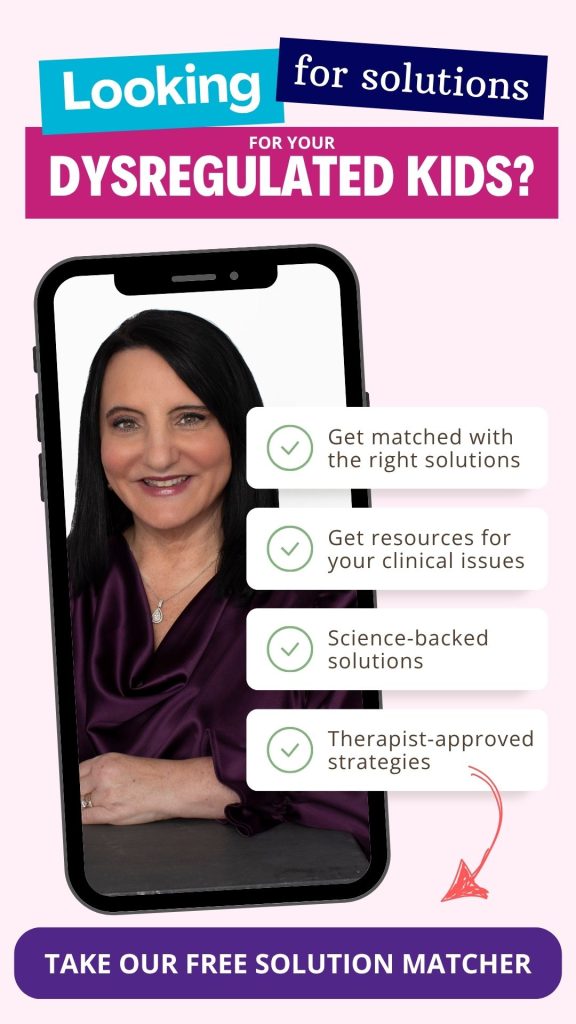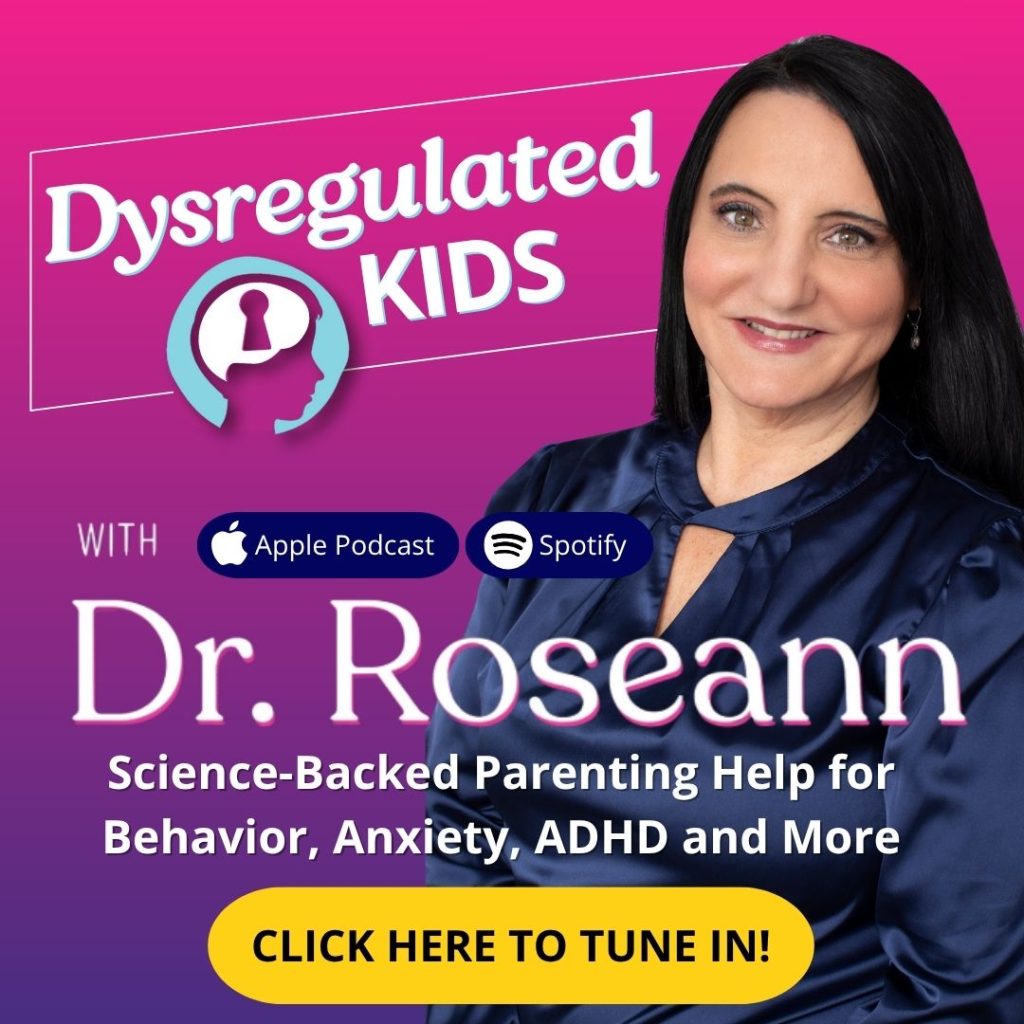Does your child melt down when plans change or homework instructions shift? You’re not alone. The good news? This guide will show you practical, science-backed cognitive shifting exercises that calm the brain and build real-world flexibility.
As a mom and a psychologist, I see every day how cognitive shifting is our brain’s ability to switch gears. This skill underpins emotional regulation, problem solving, and school success.
When kids can’t shift, frustration skyrockets; when they can, behavior improves because the brain is calmer.
Cognitive shifting (sometimes called cognitive flexibility) is part of executive functioning. It’s fueled by the prefrontal cortex—our brain’s “air traffic control.” Research consistently links flexible thinking with better attention, planning, and emotional control.

What is Cognitive Shifting—and why does it matter for my child?
Cognitive shifting is the brain’s skill for moving between ideas, rules, or tasks when something changes. It’s like switching from “recess mode” to “math mode,” or trying a new strategy when the first one flops.
Flexible thinking relies on the prefrontal cortex. It coordinates attention, emotions, and actions in line with goals. When we develop this skill, kids handle transitions more effectively and regulate their emotions more quickly.
“Cognitive flexibility is a core executive function that enables goal-directed behavior in changing environments.” — Kringelbach & Deco, 2024
Parent snapshot: Imagine a chess game. Your child plans one move, then the other player surprises them with a countermove. Cognitive shifting is the ability to stop, re-plan, and try a new path—without a meltdown.
Signs Your Child is Struggling With Flexible Thinking
Look for patterns, not perfection. Common signs include:
- Big reactions to minor changes (a substitute teacher, a route change)
- Getting “stuck” on rules or routines; trouble moving on after mistakes
- Homework battles when instructions change or there are multiple steps
- All-or-nothing thinking (“If I can’t do it perfectly, I won’t do it.”)
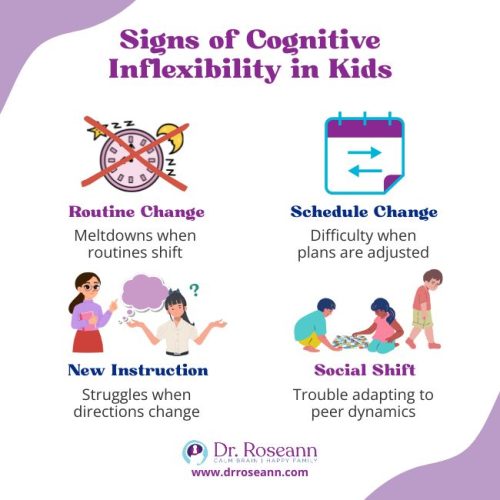
At-Home Cognitive Shifting Exercises
Below are 12 cognitive shifting exercises that are fun, low-prep, and brain-calming. Pick 2–3 to start.
1) Card Sorting (5–8 minutes)
- Why it works: Builds rule flexibility and attention control.
- How-to: Sort by color, then switch to shape; then number.
- Make it playful: “Freeze! New rule!”
- Pro tip: Track time/accuracy to show progress (great for motivation).
2) Mental Math Switches
- Why it works: Trains task switching under mild pressure.
- How-to: Rapid-fire problems; the operation changes every 3–5 items (add → subtract → multiply).
- Real life: “We have $10 and apples cost $2—how many can we buy?”
Evidence suggests targeted EF practice can generalize to shifting when it’s engaging and progressive.
3) Storytelling With Constraints
- Why it works: Promotes mental set shifting and creativity.
- How-to: Tell a story; every minute, add a rule (“Now the hero is a superhero,” “Now it’s set at the beach”).
- Stretch: Ask your child to explain how they changed the story.
4) Dual-Task Drills
- Why it works: Builds attention flexibility by juggling two streams.
- How-to: Count backward by 2s while saying the alphabet.
- Level up: Walk heel-to-toe while reciting months.
5) Role Reversal
- Why it works: Grows perspective-taking and social flexibility.
- How-to: In a disagreement, switch roles and argue the other side.
- Coach phrase: “Behavior is communication. What might they be saying?”
6) Timed Task-Switching
- Why it works: Mimics classroom transitions.
- How-to: Work 5 minutes on Task A, timer rings, jump to Task B.
- Build stamina: Increase to 7–10 minutes over time.
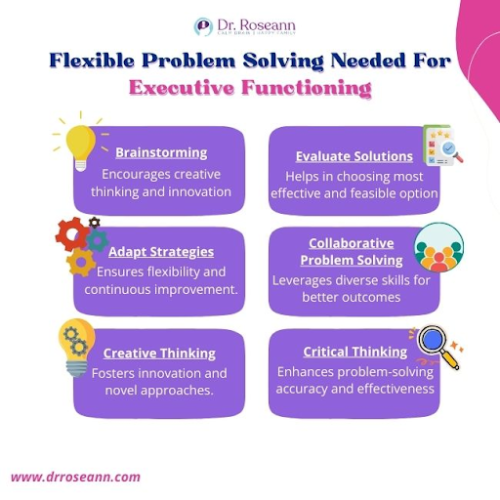
7) Flexible Problem Solving
- Why it works: Encourages a multiple solutions mindset.
- How-to: “Three ways to clean the room fast—go!” Then pick one and try it.
- Mini-debrief: What worked? What will we try next time?
8) Gentle Change of Routine
- Why it works: It desensitizes the brain to change.
- How-to: Brush teeth with the “other” hand; sit at a new breakfast seat.
- Note: Small changes build the muscle for bigger ones later.
9) Puzzle Play (Sudoku, Crosswords, Jigsaws)
- Why it works: Trains pattern recognition and shifting strategies.
- Tip: Start easier than you think; quick wins reduce resistance.
10) Cognitive Shuffling (for Bedtime Racing Thoughts)
- Why it works: Rapidly switches mental categories to reduce worry loops.
- How-to: Silently list unrelated words (apple… carpet… mailbox…).
- When to use: Bedtime or after an upsetting day.
11) Movement-Based “Brain Breaks”
- Why it works: Physical activity boosts executive skills and focus.
- How-to: 2–3 minutes of stretching, wall push-ups, or dance.
Extensive reviews indicate that exercise supports cognition and executive function across all ages.
12) Opposite Game
- Why it works: Trains inhibition + set shifting (“sit” = stand).
- How-to: After a few rounds, flip the rule back—notice how the brain adapts.
Parent example: Arlene, mom of a 10-year-old with anxiety, added “opposite game” and one 5-minute task switch in homework time. Within two weeks, transitions cut from 30 minutes of pushback to under 10.
Takeaway: start tiny, keep it playful, and celebrate micro-wins.
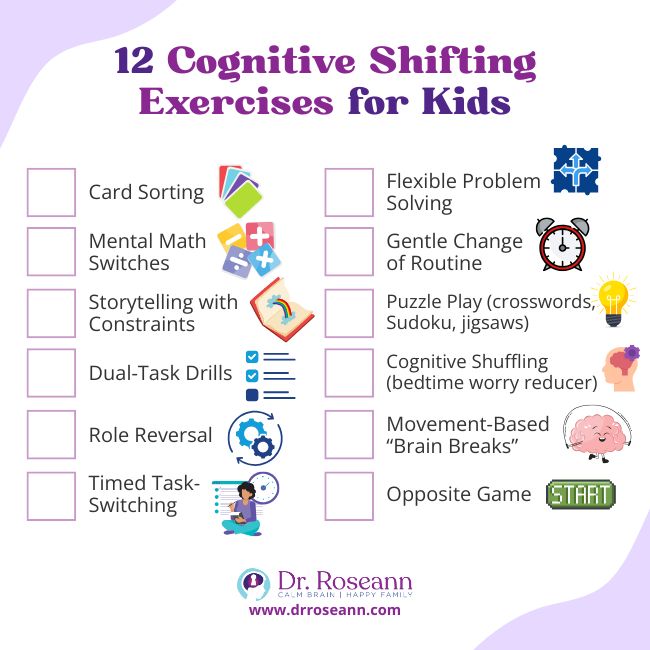
How Often Should We Practice—and How Do I Keep My Child Engaged?
- Frequency: 5–10 minutes, most days. Progress comes from consistency, not marathon sessions.
- Make it sticky: Gamify (timers, levels), choice boards, and short reflection (“What helped your brain today?”).
- Mix physical + mental tasks to boost attention and mood.
Parent example: Mark’s 8-year-old with ADHD refused “brain work,” so they started with 90-second dance breaks plus two easy puzzles. After a week, he asked to “beat yesterday’s time.”
Takeaway: engagement first; difficulty second.
What If My Child Has ADHD, Anxiety, ASD, OCD, or PANS/PANDAS?
Kids with neurodevelopmental or mood/behavioral conditions often struggle more with flexibility. But they can grow this skill with structured, joyful practice.
Studies in ADHD and ASD show that executive function training—especially when it’s fun and progressive—can support task switching and related skills. Results vary from child to child, though. This is why we start where they are and progress gradually.
| Condition | Strategy |
|---|---|
| ADHD | Short, high-interest drills; frequent movement breaks. |
| Anxiety/OCD | Pair shifting drills with calming strategies first. |
| ASD | Visual supports and clear, predictable steps. |
| PANS/PANDAS | Work closely with your clinician; calm the brain first and keep practice very gentle on “flare” days. |
How to Coach Your Child Through Transitions
- Preview the change (“In 2 minutes, we’ll switch to reading”).
- Use one calm cue (timer, hand on shoulder).
- Offer two choices that both lead forward (“Pencils or markers?”).
- Name the win (“You switched even when it was hard—that’s a strong brain.”)
Parent example: Nina’s teen with OCD dreaded schedule changes. Using previews + a 3-item “switch kit” (timer, noise-canceling headphones, fidget), he began switching classes with fewer panic texts.
Takeaway: predictability + tools lower the emotional load of change.
When Should You Seek Professional Support
- School avoidance, frequent meltdowns, or sudden regression
- Daily tasks (sleep, hygiene, homework) feel impossible
- You’ve tried consistent practice for 6–8 weeks with little movement.
A licensed provider can assess executive functioning, anxiety/OCD, learning issues, or neuroimmune factors and customize a plan. It’s not bad parenting—it’s a dysregulated brain. It’s gonna be OK.
What Results Should I Expect—and How Long Will It Take?
Most families notice smoother transitions within a few weeks when practice is short, daily, and positive. Deep changes in flexible thinking build over months—that’s normal brain learning.
The cognitive shifting exercises above are designed for real life; small steps stack into big gains. Evidence suggests EF improvements are most durable when training is engaging and used in daily contexts.
Cognitive Shifting Exercises Can Calm the Brain
Flexible thinking is teachable. You can build this skill at home with simple tools and lots of compassion. Start small, be consistent, and remember: behavior is communication.
When we calm the brain first and practice cognitive shifting exercises, kids learn to ride life’s twists with more ease and fewer meltdowns. You’re not alone and you’re doing a great job.
It’s not bad parenting—it’s a dysregulated brain. With steady practice, it’s gonna be OK.
Frequently Asked Questions on Cognitive Shifting Exercises
How long should each exercise take?
1–10 minutes. Short and consistent beats long and exhausting.
What if my child refuses?
Start with choice + fun (dice, spinners, music). Keep winning easily at first.
Can this help with bedtime anxiety?
Yes. Try cognitive shuffling to break worry loops, paired with breathing.
Will this help grades and friendships?
As flexibility grows, kids navigate directions, group projects, and conflict more smoothly. Teachers and peers notice the difference.
Terminology
- Cognitive shifting/flexibility: Switching between ideas, rules, or tasks.
- Executive functioning: Brain skills for planning, attention, memory, and self-control.
- Task switching: Moving efficiently from one activity to another.
- Mental set shifting: Changing how you approach a problem when the first way isn’t working.
Citations
Kringelbach, M. L., & Deco, G. (2024). Prefrontal cortex drives the flexibility of whole-brain orchestration of cognition. Current Opinion in Behavioral Sciences, 57, 101394. https://doi.org/10.1016/j.cobeha.2024.101394
Lee, L. Y., Healy, M. P., Fischer, N. L., Tong, K., Chen, A. S. H., Sahakian, B. J., & Kourtzi, Z. (2024). Cognitive flexibility training for impact in real-world settings. Current Opinion in Behavioral Sciences, 59, Article 101413. https://doi.org/10.1016/j.cobeha.2024.101413
Hillman, C. H., Erickson, K. I., & Kramer, A. F. (2008). Be smart, exercise your heart: Exercise effects on brain and cognition. Nature Reviews Neuroscience, 9(1), 58–65. https://doi.org/10.1038/nrn2298
Always remember… “Calm Brain, Happy Family™”
Disclaimer: This article is not intended to give health advice, and it is recommended to consult with a physician before beginning any new wellness regimen. The effectiveness of diagnosis and treatment varies by patient and condition. Dr. Roseann Capanna-Hodge, LLC does not guarantee specific results.
Are you looking for SOLUTIONS for your struggling child or teen?
Dr. Roseann and her team are all about science-backed solutions, so you are in the right place!
©Roseann Capanna-Hodge



